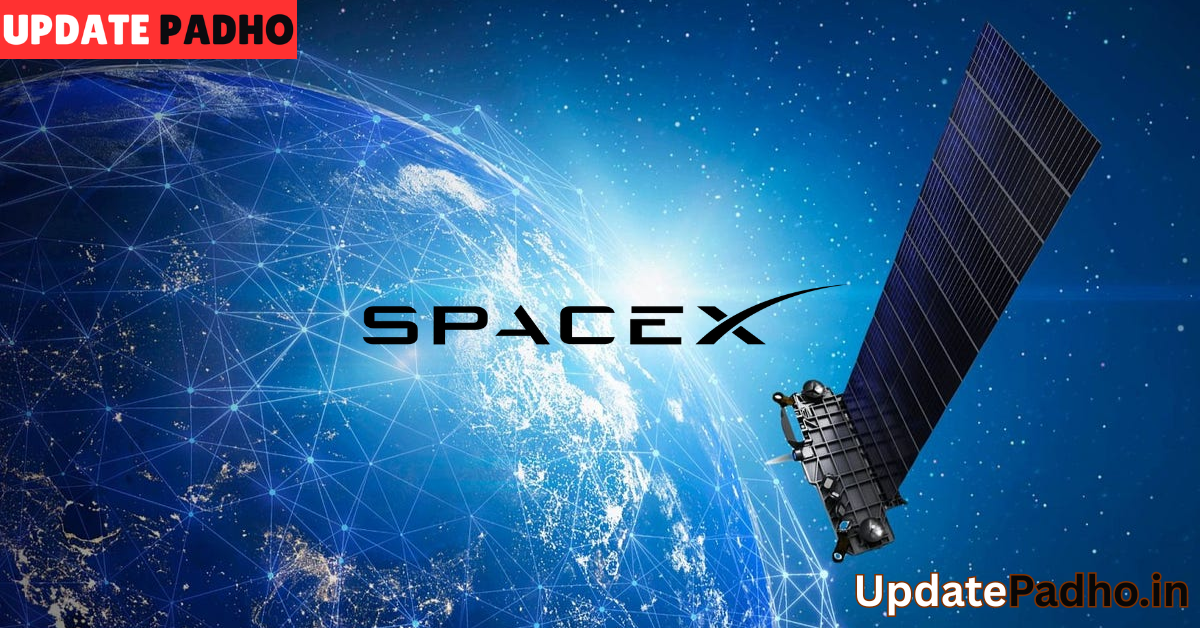The Starlink Vision: A Massive LEO Constellation
SpaceX’s Starlink project envisions a sprawling constellation of thousands of small, flat-panel satellites in low Earth orbit (LEO), typically at 540–570 km altitude. Unlike traditional geostationary satellites located ~35,800 km above Earth—with latency exceeding 600 ms—Starlink satellites offer round-trip times of just 25–40 ms, enabling near‑fiber performance for streaming, gaming, video calls, and more.
By mid-2024, over 6,000 operational satellites had been launched and deployed, with ambitions to grow the constellation to as many as 40,000 satellites ft.com. This scale is enabled by SpaceX’s unique vertical integration: they build satellites in-house and launch them aboard their reusable Falcon 9 rockets, often delivering 60 satellites at a time.
2. Advanced Satellite Design & Manufacturing
Flat, modular satellites: Each Starlink satellite features a compact, flat-panel design to maximize the number that can ride in each Falcon 9 payload .
Phased-array antennas: Satellites—and user terminals—employ advanced phased-array antennas capable of electronically steering beams within a wide 100° field of view. This allows continuous, adaptive connections to fast-moving satellites overhead .
High-throughput radios: Operating in the Ku, Ka, and emerging E bands, Starlink satellites deliver robust data transfer rates—supporting typical downloads of 50–150 Mbps, and even 540 Mbps in some reports .
Laser inter-satellite links (ISLs): Newer Starlink generations integrate optical “space lasers” (each up to ~200 Gbps), enabling satellites to relay data directly to one another without ground station involvement, forming an orbital mesh network .
Propulsion & collision avoidance: Using krypton or argon Hall-effect thrusters, Starlink satellites can adjust their orbit, perform autonomous collision avoidance, and deorbit safely at end-of-life—ensuring responsible space stewardship .
3. Generational Upgrades: V2 Mini to V3
SpaceX continues rapid innovation across satellite generations:
- V2 Mini (2023–24): Upgrades quadrupled capacity to ~96 Gbps/satellite, added laser ISLs, improved propulsion, and reduced satellite mass by ~22%. They also began enabling direct-to-cell capabilities to support phones in remote areas.
- V3 (debut expected via Starship in 2025): Each satellite will boast 1 Tbps downlink, 160 Gbps uplink, and ~4 Tbps combined RF/laser backbone capacity. This represents a ~10× boost in downlink over V2, and early reports indicate gigabit-level performance for end users.
These advancements allow Starlink to scale capacity massively—just a handful of Starship launches could double the network’s current bandwidth.
4. Infrastructure & Launch Mastery
SpaceX’s edge lies not only in satellite design, but also in aerospace infrastructure:
- Falcon 9 Reusability: By landing and reusing rocket boosters, SpaceX dramatically reduces launch costs and maintains frequent launch cadence—averaging about 2 Starlink missions per week.
- Starship-boosted launches: Future V3 satellites will ride aboard Starship, enabling heavier payloads and even more cost-efficient batching.
This seamless integration of build-launch-iterate in-house delivers unparalleled agility and cost-efficiency.
5. Diverse Market Reach & Use Cases
Starlink satellites serve increasingly varied domains:
- Consumer internet: Millions worldwide enjoy high-speed broadband with user terminals priced at a few hundred dollars.
- Rural, maritime, aviation: Critical connectivity is provided to remote land areas, ships, and aircraft—including in-flight Wi-Fi deployments like that of United Airlines (~250 Mbps speeds).
- Government & defense: The U.S. Navy and other military branches utilize Starlink for secure tactical communications .
- Enterprise, backhaul, IoT/AI: Starlink is being integrated into telecom backhaul, IoT ecosystems, and AI applications, enabling always-on, rapid edge connectivity .
- Military-grade Starshield: A specialized variant supporting reconnaissance, missile warning/tracking, and other intelligence functions, with over 118 satellites launched by early 2025.
6. Challenges & Sustainability
Operating a mega-constellation brings complex challenges:
- Space debris: Thousands of satellites require diligent collision avoidance and responsible deorbiting—Starlink addresses this with onboard autonomy, active coordination, and low-altitude placement for natural orbital decay.
- Astronomy impact: Bright satellite trails can interfere with astronomical observations. SpaceX continues to experiment with darker coatings and sun visors to reduce reflectivity .
- Regulatory/Spectrum: Global deployment requires navigating national regulations, spectrum licensing, and coordination—a slow process in some regions.
- Profitability: With high capital expenditures for satellites and launch vehicles, achieving profitability depends on volume adoption and expanding market segments .
7. The Road Ahead
SpaceX’s Starlink is projected to reach nearly $12 billion in revenue by 2025, while expanding to 40,000 satellites ft.com. Ongoing improvements—like satellite miniaturization, gigabit-capable V3 nodes, and full laser-mesh networking—point toward a future of ultra‑reliable global internet with minimal lag and high capacity.
Direct-to-cell service will further integrate satellite connectivity with everyday mobile devices, bridging digital gaps in underserved regions.
Meanwhile, Starshield signals growing influence in the defense and intelligence arena, positioning SpaceX as a strategic player beyond civilian markets.
🧭 Final Thoughts
SpaceX’s Satellite Technology—built on sophisticated hardware, in-house manufacturing, reusable launch systems, and rapid iteration—is redefining what is possible in global communications. By combining low latency, laser mesh networking, and multi-sector use cases, Starlink and its derivatives are set to usher in a new era of ubiquitous, resilient, and high-performance connectivity. The road ahead includes managing orbital sustainability, addressing regulatory hurdles, enlarging market footprint, and ensuring financial viability—but SpaceX’s unmatched technological ecosystem gives it a powerful advantage on every front.



